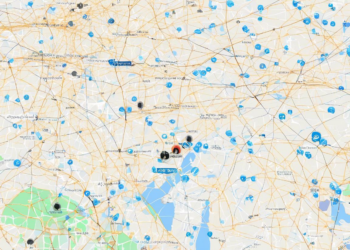Enhance Your NLP Projects with Prodigy AI: Step-by-Step Tutorial

Natural Language Processing (NLP) is a rapidly growing field that involves teaching computers to understand and process human language. It’s a crucial aspect of many modern applications, from chatbots and virtual assistants to sentiment analysis and machine translation.
But building effective NLP models often requires a significant amount of carefully labelled data. This is where Prodigy AI comes in. Prodigy is a powerful tool that simplifies the process of annotating text data for NLP projects, allowing you to build high-quality datasets with minimal effort.
In this comprehensive tutorial, we’ll guide you through the steps of using Prodigy AI to enhance your NLP projects. We’ll cover everything from setting up your environment to training and evaluating your models, providing practical examples and insights along the way.
1. Understanding Prodigy AI: A Powerful Tool for NLP Annotations
Prodigy AI is a user-friendly annotation tool designed specifically for NLP projects. It offers a range of features that make the data annotation process more efficient and accurate, including:
- Interactive Annotations: Prodigy provides a visually intuitive interface that allows you to annotate text data directly in your browser. This makes it easy to identify and label key elements like entities, relationships, and sentiments.
- Pre-Built Recipes: Prodigy offers a variety of pre-built annotation recipes that streamline common tasks, such as named entity recognition (NER), text classification, and sentiment analysis.
- Customizable Workflows: You can easily customize your annotation workflow to suit your specific needs. This includes defining your own annotation types, creating custom labels, and adjusting the annotation interface.
- Collaborative Annotations: Prodigy allows multiple users to collaborate on annotation projects, ensuring consistent labelling and reducing the risk of errors.
- Data Quality Monitoring: Prodigy provides features for monitoring data quality and identifying potential issues in your annotations. This helps you ensure that your datasets are accurate and reliable.
2. Setting Up Your Environment for Prodigy AI
Before diving into annotation, you need to set up your environment. Here’s a step-by-step guide:
- Install Python: If you don’t have Python installed, download the latest version from the official Python website: https://www.python.org/downloads/
- Install Prodigy: Use pip, Python’s package manager, to install Prodigy:
pip install prodigy - Create a Prodigy Project: Use the
prodigy initcommand to create a new Prodigy project. This will generate a configuration file and a directory to store your annotation data.
3. Exploring Prodigy Recipes: Streamlined Annotations for Common NLP Tasks
Prodigy comes with a collection of pre-built recipes that simplify annotation for common NLP tasks. These recipes handle the setup and configuration for you, allowing you to focus on labelling your data:
- Named Entity Recognition (NER): This recipe helps you identify and label entities like people, organizations, and locations in your text. You can use pre-trained models or customize the process to fit your specific needs.
- Text Classification: Classify text into predefined categories like sentiment, topic, or intent. You can use Prodigy’s interactive interface to train your model and evaluate its performance.
- Sentiment Analysis: This recipe allows you to label the sentiment expressed in a text, such as positive, negative, or neutral. You can use different annotation approaches, like rating scales or text-based labels.
- Tokenization and Lemmatization: Prodigy can help you break down text into individual words (tokens) and reduce them to their base form (lemmas). This step is often crucial for preparing data for downstream NLP tasks.
4. Customizing Your Annotation Workflow: Tailoring Prodigy to Your Specific Needs
While Prodigy offers pre-built recipes, you can also customize your workflow to suit your specific requirements:
- Defining Annotation Types: Create custom annotation types to capture specific information from your text. This might involve adding custom labels for specific entities, relationships, or events.
- Creating Custom Labels: Define your own set of labels based on your project’s needs. You can use existing label sets or create your own vocabulary.
- Adjusting the Annotation Interface: Prodigy allows you to customize the annotation interface to improve user experience. For example, you can adjust the layout, add keyboard shortcuts, or create custom visualizations.
5. Collaborative Annotations: Leveraging Team Effort for Enhanced Data Quality
Prodigy facilitates collaborative annotations, allowing multiple users to work together on a project. This collaborative approach offers several advantages:
- Consistent Labeling: By working together, annotators can ensure consistency in their labelling decisions. This reduces errors and improves data quality.
- Enhanced Accuracy: Having multiple perspectives on the data can lead to more accurate annotations, especially for complex NLP tasks.
- Faster Annotation: Collaborative annotation allows you to divide the workload, resulting in faster annotation times and more efficient data preparation.
6. Data Quality Monitoring: Ensuring the Reliability of Your Datasets
Prodigy includes features to monitor the quality of your annotated data. These features help you identify potential issues and take steps to correct them:
- Annotation Statistics: View statistics about your annotations, including label distribution, annotation times, and inter-annotator agreement (IAA). This information helps you assess the quality of your data and identify potential issues.
- Quality Checks: Prodigy allows you to perform quality checks on your annotations. This might involve comparing annotations from different annotators, reviewing flagged annotations, or using automated quality control methods.
- Data Visualization: Visualize your annotated data to identify potential patterns and anomalies. This can help you understand the distribution of your labels and spot potential issues in your annotations.
7. Training NLP Models with Prodigy: Building Accurate and Effective Models
Once you have a high-quality annotated dataset, you can train NLP models using Prodigy. Here’s a basic workflow:
- Choose a Model: Select a suitable NLP model for your task, such as a BERT-based model or a pre-trained language model.
- Load Your Data: Load your annotated data into your chosen model framework.
- Train the Model: Train the model using your annotated data. Adjust hyperparameters and experiment with different training techniques.
- Evaluate the Model: Use metrics like accuracy, precision, recall, and F1 score to evaluate the performance of your trained model.
8. Prodigy in Action: Practical Examples and Case Studies
To better understand how Prodigy can be used to enhance your NLP projects, let’s look at some practical examples:
- Sentiment Analysis for Customer Reviews: Prodigy can be used to annotate customer reviews for sentiment analysis. You can train a model to classify reviews as positive, negative, or neutral. This information can be valuable for businesses looking to understand customer feedback and improve their products or services.
- Named Entity Recognition for Medical Text: Prodigy can be used to annotate medical texts for named entity recognition. You can train a model to identify and label entities like diseases, medications, and symptoms. This information can be used to develop healthcare applications, such as disease diagnosis or treatment recommendation systems.
- Text Classification for Social Media Monitoring: Prodigy can be used to annotate social media posts for text classification. You can train a model to categorize posts based on topics like politics, sports, or entertainment. This information can be used to monitor social media trends, identify potential risks, or analyze public opinion.
9. Resources and Community Support: Getting Started and Staying Updated
Prodigy AI provides a wealth of resources for users, including:
- Official Documentation: The Prodigy documentation provides detailed information on all features, recipes, and best practices. https://prodigy.ai/docs/
- Community Forum: Join the Prodigy community forum to connect with other users, ask questions, and share your experiences. https://community.prodigy.ai/
- Blog and Tutorials: The Prodigy blog provides articles and tutorials on various NLP topics, including annotation techniques, model training, and real-world applications. https://prodigy.ai/blog/
10. Conclusion: Elevate Your NLP Projects with Prodigy AI
By leveraging the power of Prodigy AI, you can significantly enhance your NLP projects by simplifying the annotation process, improving data quality, and ultimately building more accurate and effective models.
Prodigy’s user-friendly interface, pre-built recipes, collaborative features, and data quality monitoring tools make it an invaluable tool for any NLP practitioner. With its versatility and comprehensive resources, Prodigy empowers you to take your NLP projects to the next level.













